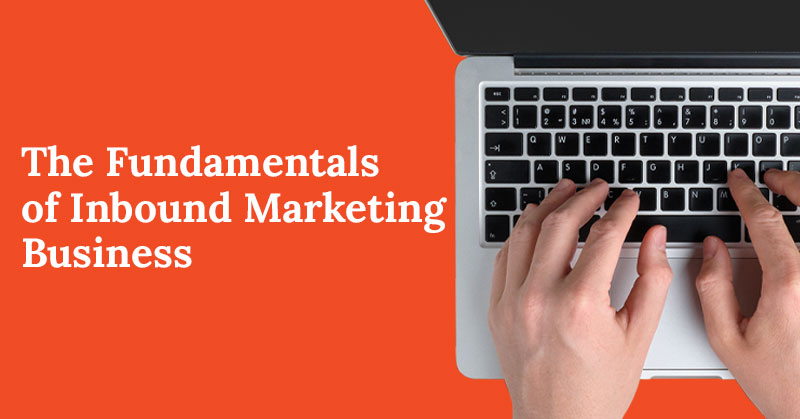The B2B Marketing Cycle – Directing your business to the right hands
When it comes to marketing a business – B2B or B2C – the focus needs to be quality over quantity. Just like many things in life, marketing has its own cycle too. A cycle that attunes three key stages to ensure the delivery of performance-focused marketing solutions that action positive growth for a business.
Ultimately, any B2B marketing needs to lead with innovation, cull the complex and strategize with true intent to capture a brand’s audience and build a strong market position amongst its competitors.


Attract
First is the power of attraction to hone greater awareness and engagement.
Uncovering why your brand does what it does, sells what it sells, and what it stands for is part of the ‘awareness’ step. When you hone the ‘whys’ of your brand and ‘reasons’ for doing, you become self-aware and can then determine the goals and creative strategies needed to communicate your ethos to other businesses. The awareness step involves:
identifying audiences,
analysing existing audiences,
questioning which technology platforms your audience is using and when they use.
You can action this by engaging tools like Google Analytics to help with analysis; engaging Facebook Audience Insights and AdWords Keyword Planner, to source and then target specific businesses, and reveal what they are looking for online. This helps to secure content placement decisions and ensure marketing is directed into the right channels.
The next step is to engage your target audience through a series of campaigns – i.e running A/B tests for each campaign to determine which creatives/offers/ landing pages perform the best – and then testing each lead source to identify which one is producing the higher quality leads.

Typical B2B campaigns include:
eDM landing pages campaign: Position a strong set of competitive offers to a targeted audience base.
Display campaigns: Content specific and visually engaging – Google and Microsoft Advertising. Targeted businesses are driven to a landing page for a requested call back.
Facebook campaigns: Using an existing database of customers, look-alike audiences can be targeted on Facebook via three campaign types – Objective and Awareness, Retargeting and Secondary – to warm up audience, secure their custom and personalise offerings
LinkedIn campaign: To target specific verticals and job titles which help to drive interested users to a ‘call-me-back’ form.




Engage
With business goals and brand ethos at the fore, and audience secured via targeted campaigning, the next step in the cycle is focused on engagement – specifically focused on website and data.
Website performance is essential to successful B2B marketing – if your customers aren’t being driven to the right pages due to poor content, position and structure, or if critical information is being lost on core landing pages, growth is at a standstill.
To ensure you’re marketing stays moving, your website needs to action specific tools, testing, methods and means . . .
Website audit and website management: A full site audit helps to determine where page improvements need to be made, and website maintenance, security, data requests and back ups all need to play out to ensure your site performs consistently.
Data Analysis and Insights: By analysing the information streams pacing through your business’ channels, you can understand customer behaviours, and then apply these insights to marketing means.
Website Conversion Optimisation: Every conversion – home page to services page, about us page to contact us page – presents an opportunity to guide your customers deeper into your site – for example, special product links.
A/B Testing: Split testing takes the guesswork out of optimisation. So, by comparing the performance power of two versions of a webpage or app, you can collect data to make better decisions around metric changes before actioning those changes.
User Engagement Tracking: By keeping tabs on your customers engagement across your website – and social channels – you can better understand what’s keeping them interested in your business.
Layout and look: The layout of your site should present all services, categories and product info successfully, and include specific information on specific pages to achieve lead targets. To ensure those leads head to the correct place, content and design modifications should centre on ease of navigation and support lead generation processes.

Delight
With website optimised, data in all the right places, now it’s time to delight customers. This means keeping them engaged with events and accounts-based activity.
The marketing ball stays well and truly rolling when you keep your finger on the pulse of engagement, and when you’re consistently improving the user experience of your website and social platforms. To stay up with the play, you should . . .
Action marketing automation software: CRM tools – like HubSpot – centralise all customer details, lead activity and status of all customer relationships. CRM allows you and everyone in your business to access all customer play in one place. It informs you when a customer in your database engages with your email or your website, allowing you to automatically action another step in-step with their activity.
Practise artful SEO: To delight your customers, you have to cleverly optimise your social media presence. This means staying responsive and honing the correct SEO (search engine optimisation) skills to ensure your digital platforms intersect seamlessly. SEO done correctly affords your business greater gains over competitors: your website will appear top of customer searches, and in front of reputable sources, cementing your trusted reputation.


Building visibility for all the right reasons has to stay happening, here’s how:
Maintain meaningful engagement: Social media is intrinsic to your brand identity and values – but it shouldn’t be about just spreading content. Engage meaningfully with Facebook and LinkedIn so you can connect with people above and beyond your circles, ZOOM to ‘meet’ with people, implement CRMs to remind you when it’s a customer’s birthday, and use software tracking systems so you see how many times someone’s viewed your Services page.
Craft great content: Whether it’s’ LinkedIn, Facebook or an email campaign, or new landing pages, flyers and brochures, well-crafted content will reel in your audience. All content – regardless of platform or site position – should personally engage with your customers and speaks to their wants and needs.
The lifecycle of B2B marketing doesn’t have an end date stamped on but it does require focused marketing expertise to drive it. So, reach out to our team of performance-driven marketers who can provide the structural support, creative essentials and strategic solutions your business needs to grow.

Written by: Cory Gordon
Cory is your key contact for developing a strategy that helps B2B businesses grow.
With 20 years of marketing experience in businesses of all sizes, industries and segments (we’re talking SME, large global organisations, B2C, B2B, retail, education, automotive, and fashion), he has the ability to add real value across all levels of an organisation.
More than just a senior marketer, Cory is your general nice guy, he is a father and a husband, and a lover of all things Star Wars.
Need help with running your business more efficiently?
Or want to ask us a question? Just ask, we’re here to help.



